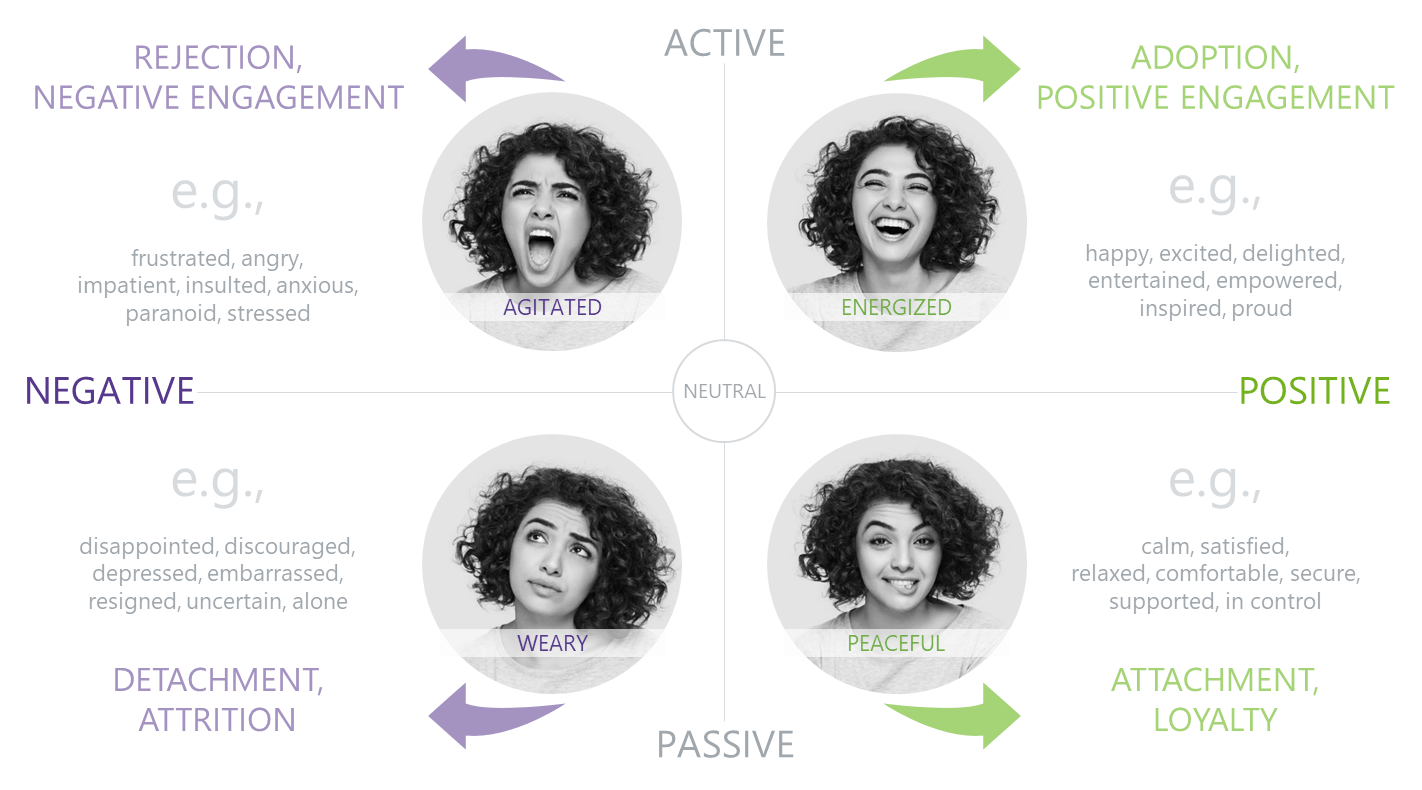It’s about a 3 min. read.
Emotion is a powerful motivator—arguably THE most powerful motivator—and can make or break a consumer relationship. Case in point: Me and KitchenAid.
I recently bought a KitchenAid gas cooktop. It was a gorgeous model I loved—until one of the burners exploded. Thankfully no one was hurt, but it could have been bad. So, I called the KitchenAid helpline, which is run by their parent company, Whirlpool. Then I waited. And waited. And waited… In total, I spent nearly TWO HOURS on hold.
Waiting hours to tell a Whirlpool rep our cooktop caught fire should have been infuriating. But it wasn’t. Why? Their hold music! It cooled my hot temper and warmed my cold Gen-X heart. I heard songs like Don’t You Forget about Me, Eye of the Tiger, and Don’t Stop Believin’. It was just too hard to stay mad with Journey crooning in my ear.
Then, when a rep finally heard my story, she said I should talk to their Safety Department. In order to do that, I sat on hold. AGAIN. But this time their music was different. Take a listen—it may ring a bell: [click to listen]
My fellow Game of Thrones viewers will recognize that as the song that played when Cersei blew-up the Sept—which, in GoT laymen’s terms, involved using a fantastical kind of gasoline to blow-up a church full of people.

Yes, that is what I listened to as I waited on Whirlpool’s “Safety Line” to talk about how my cooktop exploded. All I could do was laugh. To the person at Whirlpool who picks the hold playlist: I salute your musical taste and twisted sense of humor!
Music’s effect on emotions is mostly involuntary and hard to combat. In this case, it saved me from losing my mind on a rep who wouldn’t have deserved it, and trashing KitchenAid on every public platform possible. So this story speaks to the power of music to tame the angry consumer—but, more broadly, it’s a study in the importance of understanding and actively managing consumers’ emotions.
All emotions fall into one of four types that can be plotted on two axes: Negative to Positive (i.e., feeling bad to good) and Passive to Active (i.e., low to high energy). The importance of which types of emotions a brand inspires depends on the matter at hand. For example, teams tasked with new customer acquisition should focus on inspiring ACTIVE positive emotions, while teams tasked with driving customer loyalty should focus on inspiring PASSIVE positive emotions.

Industry also matters! For example, most brands should aim to minimize negative emotions, especially ACTIVE negative emotions, which inspire reactions like trolling the brand online and posting bad user reviews. But stirring some negative emotions can be good for media brands as long as they ultimately inspire more positive than negative. Game of Thrones is a good example of this. It started out with a good balance of positive-to-negative emotion, but ended-up inspiring too much active negativity.
Because of the importance of understanding consumer emotions—and the utility of this particular framework—we’ve worked hard to develop AI that reliably captures emotions in each quadrant from what consumers say about how they feel.
Our custom-built AI enables us to take text from things like survey open-ends, or transcripts of video/audio recordings, and quantify how much a brand, product, service or experience inspires each of the four core types of emotions. Plus, we have benchmarks in major industries.
Building the AI has been a long, arduous process involving an exhaustive analysis of emotions expressed by all kind of consumers, and regarding all kinds of brands and experiences. And it’s taken a lot of HI (human intelligence) to ensure that our final AI solution works well. But the effort was worth it. We have a validated approach to capturing each type of emotion using scales, but the best way to unpack emotions almost always involves asking consumers to tell us in their own words.
And, incidentally, there is no scientifically valid way of uncovering emotions that beats asking the right questions and listening in the right ways. To quote the Handbook of Research Methods in Social and Personality Psychology, a favorite from my grad school days, “In practice, objective measures in the brain and body tend to be weakly correlated with one another, and together they do not consistently and specifically distinguish between instances of anger, sadness, fear, and so on. If we want to know whether a person is experiencing an emotion, we have to ask her/him. Self-report is currently the only valid way of assessing subjective emotion.”
Consumers are people. And, today, we’re all wearing our humanity on our sleeves. Between the surging pandemic, political turmoil, social unrest, remote schooling, and an uncertain economy, we’re all like raw nerves riding a rollercoaster. People weren’t designed to be this stressed, on so many fronts, for this long. It’s never been more critical for organizations to stay in touch with how their products, marketing, and experiences are making people feel.
Erica is CMB’s former VP of Consumer Psychology. She holds a Ph.D. in psychology from Princeton University. Prior to CMB, she led insights research at American Express, where she was a recipient of the CMO Award for Achievement in Excellence.